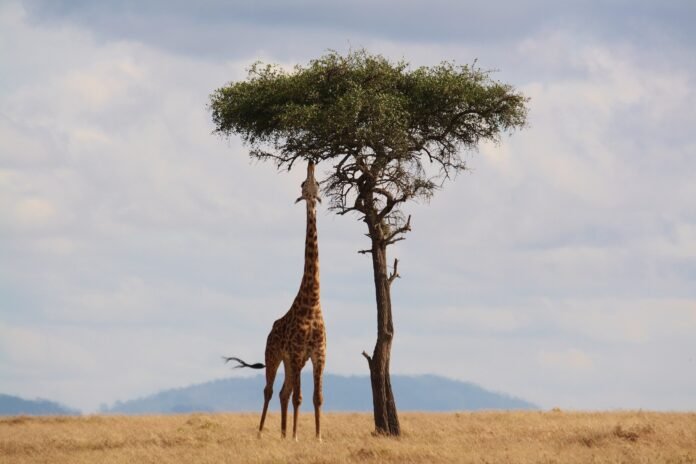Planning an African safari can be a thrilling adventure requiring careful preparation. Understanding the environment, wildlife, and the destination’s culture is essential.
This article will give some essential tips on planning the perfect wildlife safari. It will include safari gear, safety measures, wildlife photography, and other important considerations.
Understanding the Environment
Before embarking on an African safari, you must understand the environment in which you will be traveling. The climate, terrain, and wildlife all play a crucial role in the success of your safari. Research the area you will visit, including its climate and topography.
It will help you decide the clothing and gear you must bring. For example, if you plan a safari in Serengeti, you should be prepared for hot temperatures during the day. And, also make sure to expect cooler temperatures at night.
You may also encounter rough terrain, including rocky outcroppings and steep hills. Knowing this, you should pack clothing that is lightweight and breathable. But make sure it provides adequate protection from the sun and insects.
Long-sleeved shirts and pants made from lightweight, breathable fabric are ideal.
Safari Gear
Packing for an African safari requires careful consideration. You must fill enough clothing and gear to last for your trip. It is important to bring clothing suitable for the climate and environment and comfortable for long days of travel.
When it comes to footwear, sturdy hiking boots are a must. They should be comfortable and give good ankle support. You should also bring a pair of sandals or flip-flops to wear around your campsite. Bring a wide-brimmed hat to protect your face and neck from the sun.
Other essential items to pack include a good-quality camera with extra batteries, a flashlight, and a water bottle. You should also consider bringing top-of-the-line binoculars or binos, which you can get from the best company for binos.
It is also a good idea to bring a small backpack to carry your gear and supplies. In addition to clothing and equipment, you should also get some basic medical supplies. This includes medications such as pain relievers, antihistamines, and anti-diarrhea medication.
If you have a chronic health condition, pack any necessary medications and bring copies of your medical records.
Safety Measures
Safety should always be a top priority when planning an African safari. It is essential to be aware of the risks and to take precautions to lessen them as much as possible. Before embarking on your adventure, research your destination and discover any potential dangers.
It may include dangerous wildlife, political instability, or malaria-related health risks. To cut down the risk of wildlife encounters, you must always to follow your guide’s instructions. You should also avoid getting too close to animals and refrain from feeding them.
Bringing a first-aid kit and any necessary medications is also a good idea. It would help if you also took precautions to protect yourself from insect bites and other hazards.
It may include wearing insect repellent and using mosquito nets at night. You should also try to avoid swimming in bodies of water where there may be crocodiles or hippos.
Wildlife Photography
One of the highlights of an African safari is the opportunity to take stunning wildlife photographs. Having the right equipment and knowing the best techniques is essential.
When it comes to camera equipment, a good quality DSLR or mirrorless camera with a telephoto lens is essential. It is also important to bring extra memory cards and batteries, as you will be taking many photographs. A tripod or monopod can also be helpful to keep your camera steady.
It would help to position yourself with the sun behind you to take the best wildlife photographs. This simple yet effective photography trick will give better lighting for your subject.
You should also be patient and see the animal’s behavior, as this will allow you to capture its natural movements. It is important to remember that you should always do wildlife photography with respect for the animals.
It would help if you never disturbed their natural behavior or put them in danger for the sake of a photograph. Always listen to your guide and follow their instructions on behaving around wildlife.
Other Considerations
In addition to the above tips, there are a few other considerations to consider when planning an African safari. These include:
Choosing the Right Time to Go
The best time to go on an African safari depends on the destination and the wildlife you want to see. Research the area you will be visiting and choose when the animals are most active.
Choosing the Right Tour Operator
Choosing a reputable tour operator with experienced guides who can provide a safe and enjoyable experience is essential.
Being Respectful of Local Culture
When traveling to a foreign country, respecting the local culture and customs is essential. Learn about the local customs and etiquette before you go, and be mindful of your behavior there.
Being Prepared For the Unexpected
Despite careful planning, unexpected events can happen on an African safari. It would help if you were prepared for changes in weather, travel delays, and other unforeseen circumstances.
Planning for a Wildlife Safari
Planning the perfect wildlife safari requires careful preparation and consideration. You can have an unforgettable adventure by understanding the environment, packing the right gear, taking safety measures, and knowing how to take great wildlife photographs.
Proper planning and preparation can make an African safari one of the most exciting and rewarding trips. So, get ready the right way, and take that adventure today!
If you enjoy this guide on planning a wildlife safari, visit our blog for more today.












